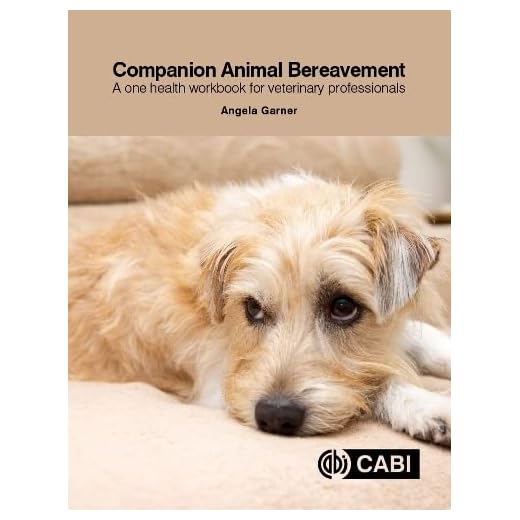




Consult a trusted veterinarian to discuss options for a gentle departure. They can provide insights into the process and help determine the right timing based on health and quality of life. Understanding the signs of discomfort or suffering in a pet can aid in making this heart-wrenching decision.
In my experience, creating a calm and loving environment during this time is crucial. Consider scheduling the appointment at home, where familiar scents and sounds can ease anxiety for both you and the furry friend. This setting can foster a sense of security and comfort, making the moment as peaceful as possible.
Prepare for the visit by gathering cherished items, such as favourite toys or blankets. These can serve as a source of comfort and familiarity. Additionally, having a few close friends or family members present can provide emotional support during this challenging moment. Sharing stories and memories can help celebrate the life shared together.
After the process, take time to grieve and reflect. Each pet leaves a unique imprint on our hearts, and honouring that bond is important. Consider creating a small memorial or engaging in an activity that commemorates the joyous times spent together. This can aid in the healing journey ahead.
Recognising when it’s time to say goodbye
Look for changes in behaviour. If a once-active companion is now reluctant to play, struggles to stand, or seems disinterested in favourite activities, these could be signs of declining health. Pay close attention to their eating habits; a significant decrease in appetite can indicate discomfort or illness.
Monitor their mobility. If moving around has become challenging, or if they show signs of pain when getting up or lying down, it may be time to assess their quality of life. Watching them struggle can be heart-wrenching, and it’s important to consider their comfort.
Observe their interaction with family. If they withdraw from companionship or seem to avoid contact, it could signal emotional or physical distress. A loving animal that no longer seeks affection may be trying to communicate something important.
Consult with a veterinarian for a thorough evaluation. They can provide insight into health issues and offer guidance on pain management and comfort measures. Discussing options with a professional can bring clarity to a difficult situation.
Reflect on their overall happiness. Think about the joyful moments shared and consider whether those experiences have been replaced with more discomfort. Sometimes, letting go is the kindest choice to ensure they no longer suffer.
Trust your instincts. If uncertainty persists, keep a journal of behaviours and changes. Documenting daily observations can help clarify thoughts and feelings, ultimately guiding a compassionate decision.
Understanding the euthanasia process
The procedure typically begins with a consultation at a veterinary clinic. During this time, a vet will explain the steps involved, addressing any concerns. It’s crucial to ask questions about what to expect, ensuring a clear understanding before proceeding.
The actual administration involves an injection, usually of a sedative followed by a euthanasia solution. The sedative helps the animal relax and become drowsy, minimising stress. After a few moments, the euthanasia solution is injected, leading to a peaceful passing. Many owners find comfort in staying close, offering gentle words or a favourite toy for reassurance.
Timing is often flexible, allowing for a private moment. Some clinics provide options for in-home services, which can create a familiar and comforting setting. This choice can alleviate anxiety for both the pet and owner, fostering a sense of peace during the experience.
Post-procedure, you’ll receive guidance on what to do next, including options for cremation or burial. Many vets offer support resources to help navigate the emotional aftermath, which can be a significant aid in the grieving process.
Connecting with support groups or counselling can also be beneficial. Sharing experiences with others who understand can help in processing feelings and finding solace. Remember, you’re not alone in this difficult time, and there are people who care and want to help.
Choosing the Right Veterinary Clinic for the Procedure
Prioritise comfort and compassion when selecting a veterinary clinic for this difficult time. Here are key factors to consider:
- Reputation: Research local clinics, read reviews, and ask for recommendations from trusted friends or family. A clinic known for its empathetic approach will make a significant difference.
- Experience: Inquire about the veterinarians’ experience with euthanasia. A professional who handles these situations regularly can provide reassurance and support.
- Environment: Visit the clinic beforehand to assess its atmosphere. A calm, clean, and welcoming space can ease anxiety for both you and your beloved companion.
- End-of-life Services: Some clinics offer at-home euthanasia, which may be less stressful for your pet. Discuss available options with the staff.
- Cost Transparency: Understand the costs involved in the procedure, including any additional services like cremation or memorial options. A transparent clinic will help you prepare financially.
After making your choice, consider discussing your pet’s needs and preferences with the veterinarian. This can help create a more personalised experience. If you’re concerned about nutrition during this time, you may find it helpful to explore the best wet dog food for boston terrier options, ensuring your companion remains comfortable and nourished.
Trust your instincts; the right clinic will resonate with you and provide the support needed to navigate this emotional journey.
Preparing for the Final Farewell with Your Pet
Gather mementoes before the procedure. Personal items like their favourite toy or a blanket can provide comfort during this difficult time. Having familiar scents around can help create a serene atmosphere.
Consider a quiet space for the farewell. A tranquil environment allows for reflection and connection. If possible, arrange for the procedure to take place at home. This can reduce stress for both you and your companion.
Involve family members. Sharing this moment with loved ones can provide emotional support. Each person can express their gratitude or share cherished memories, creating a sense of closure.
Prepare for the emotional impact. Anticipate feelings of grief and sadness; these reactions are natural. Engaging in calming activities, such as deep breathing or meditation, can help ground you in the moment.
Document the experience if you wish. Taking photos or writing down thoughts can be a meaningful way to commemorate the bond shared. These keepsakes may offer comfort in the future.
Afterwards, think about how to honour their memory. Creating a memorial, whether through planting a tree or making a scrapbook, can be a therapeutic way to celebrate the life they lived.
Lastly, reach out for support. Talk to friends who understand or consider joining a pet loss support group. Sharing your feelings can aid in the healing process. Remember, it’s perfectly acceptable to grieve deeply for a beloved companion.
FAQ:
What are the signs that it might be time to consider putting my dog to sleep?
Determining when to consider euthanasia for your dog can be a difficult and emotional decision. Some signs that it may be time include persistent pain that cannot be managed with medication, a significant decline in quality of life, difficulty in performing everyday activities such as eating, walking, or playing, and the presence of terminal illness or severe injury. Observing your dog’s behaviour can also provide insights; for instance, if they are no longer interested in their favourite activities or are isolating themselves, it may indicate that they are suffering. Consulting with a veterinarian can help you assess your dog’s condition and discuss options.
What should I expect during the euthanasia process for my dog?
The euthanasia process is designed to be as peaceful and respectful as possible. Typically, you will have the option to bring your dog to a veterinary clinic or have a vet come to your home. Initially, a sedative may be administered to relax your dog and make them feel comfortable. Once your dog is calm and sleepy, the veterinarian will administer an injection that will gently stop your dog’s heart. The procedure usually takes just a few moments. It is natural to feel a range of emotions, and many owners choose to stay with their pet during the process for comfort and closure. You may want to discuss any specific wishes or concerns with your vet beforehand.
How can I cope with the loss of my dog after euthanasia?
Grieving the loss of a pet can be incredibly challenging, and it’s important to allow yourself to feel and express your emotions. Finding support from friends, family, or pet loss support groups can be helpful, as sharing your feelings with others who understand can provide comfort. Create a memorial for your dog, such as a photo album or a special spot in your home, to honour their memory. Engaging in activities that you enjoyed together can also help in the healing process. Remember that everyone grieves differently, so take your time and be gentle with yourself as you navigate this difficult time.
Are there any alternatives to euthanasia if my dog is suffering?
If your dog is suffering but you are not ready to consider euthanasia, there are alternatives that may help improve their quality of life. Palliative care can manage pain and other symptoms associated with chronic illnesses, allowing for a more comfortable life for your dog. This may include pain relief medications, nutritional support, and therapies like acupuncture or physiotherapy. Discussing your options with a veterinarian can provide insights into what may be best for your dog’s specific condition. It’s essential to have open and honest conversations about your dog’s prognosis and what you can do to support them during this time.









